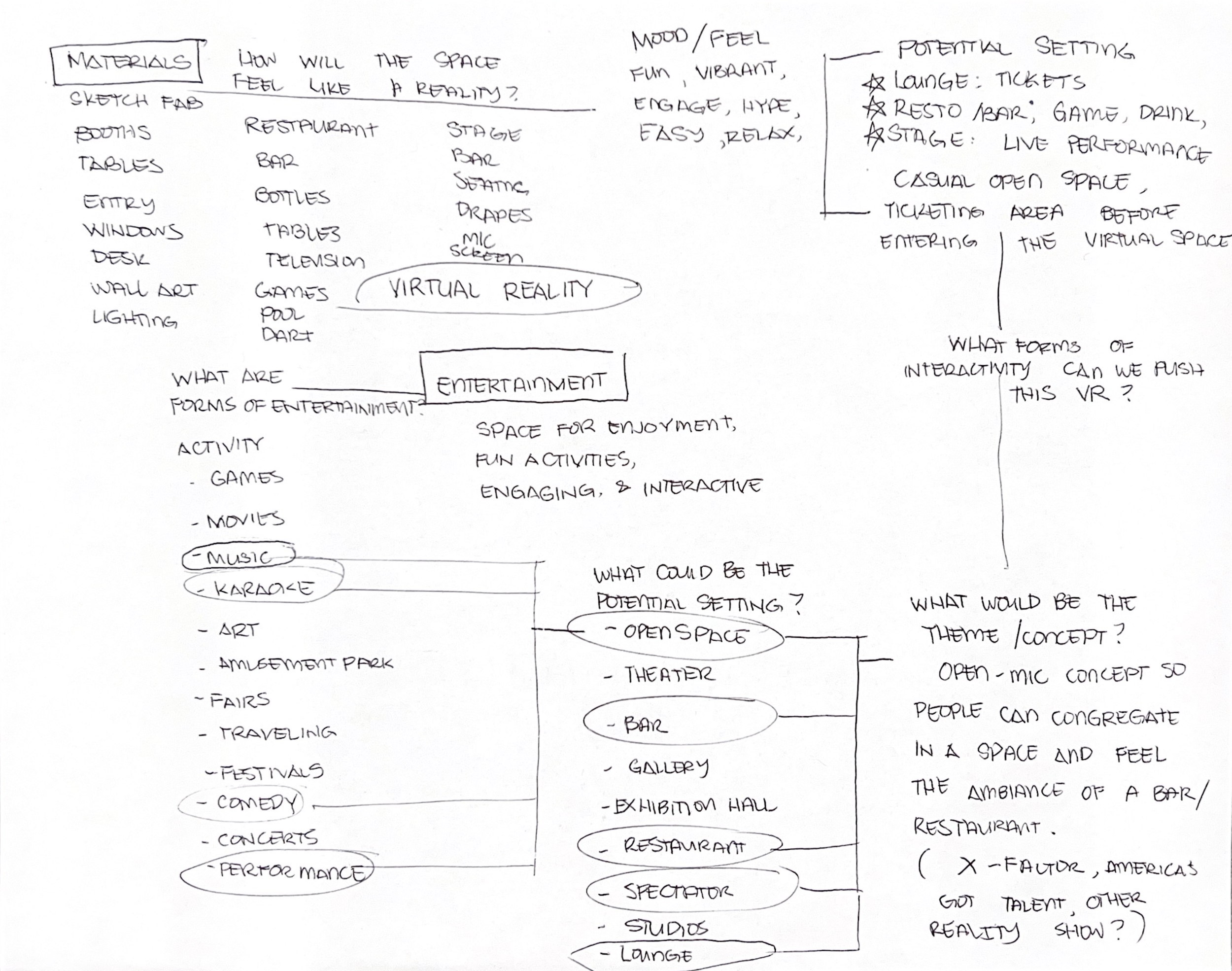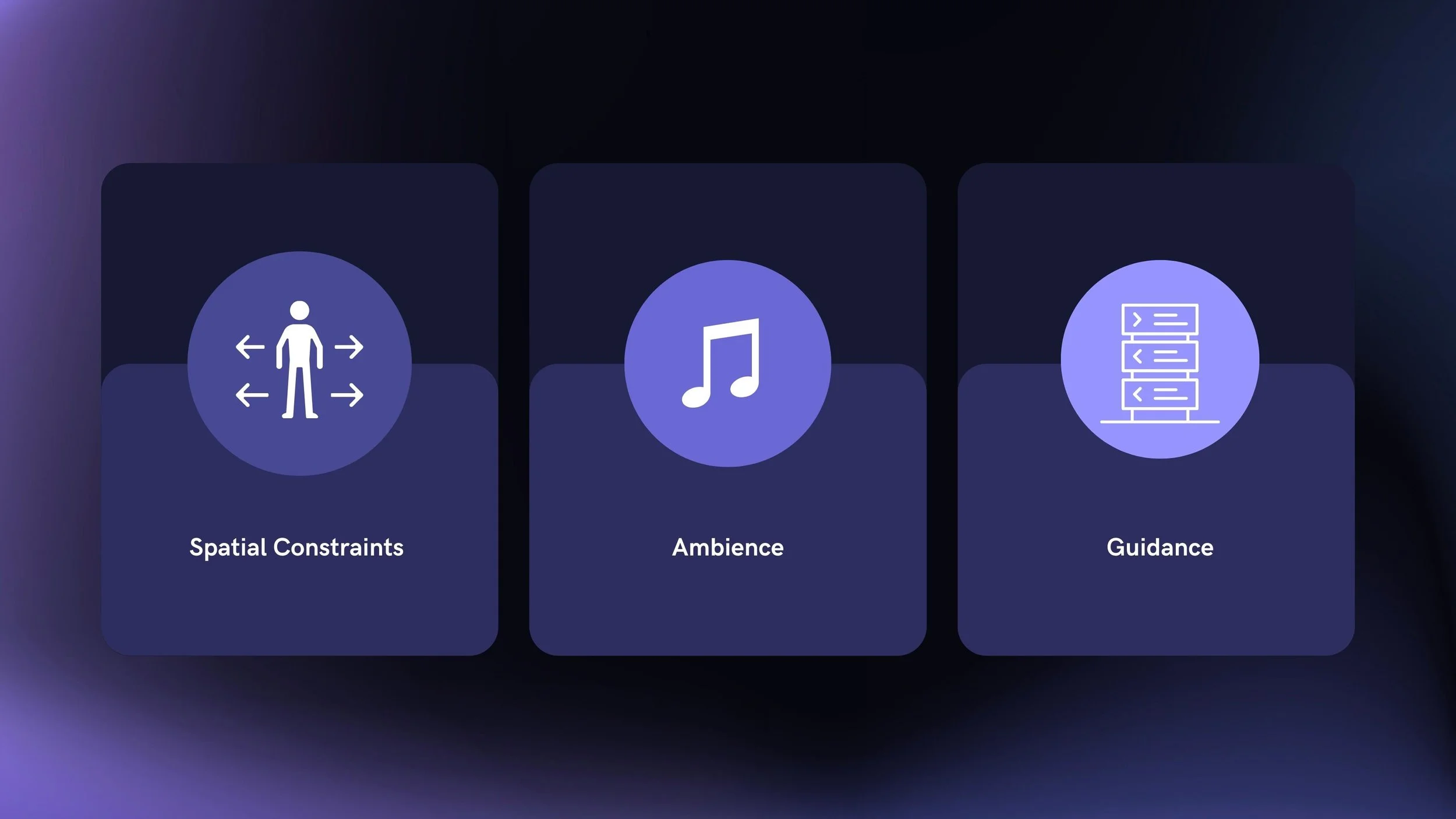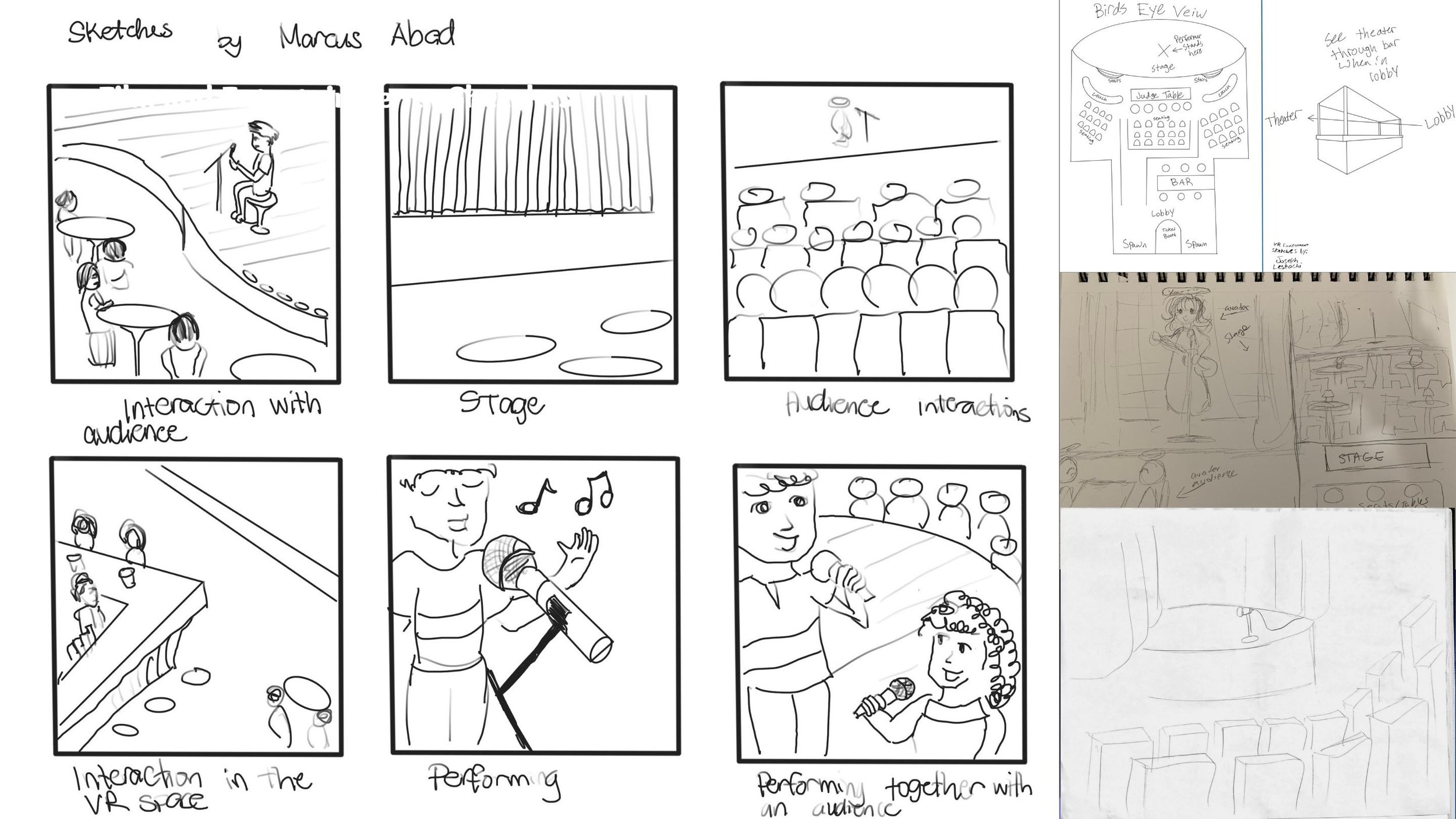
Virtual Reality Space for Entertainment
Case Study
User Experience | Extended Reality | Interaction Designer
01
Project Overview
Project Brief
Designing for an innovative virtual reality experience with regards to social interaction in an entertainment environment.
Our goal for social interaction is to perform and play with friends through an open mic/improv night within the virtual environment. It will be an environment for friends to gather and spend time together taking on roles of judges, performers, critics, and an audience at an open mic night type of event. The environment will feature a stage for people to stand on and present their talent (comedy, singing, etc.), chairs for the audience to sit in and watch the performance, and a bar with drinks or snacks for the audience to grab. Social interaction metaphors that can be drawn from resources include talent shows, karaoke bars, x-factor-like shows, and reality shows. Our place metaphors will be the stage/platform, seats, bar area, and a judge's table, which can be found in places like comedy shows and bars.
02
Understanding User
User Research
Interviews
Pain points
Personas
Problem Statements
Primary Research
VR experience is becoming widely accessible and commercialized for users. Our team decided to design a virtual space that is entertainment. We conducted 3 focus groups with pairs of students, of mixed genders and ages from their 20’s - 30’s. Some of our findings surround students’ familiarity with different VR platforms and their experience with them.
Brainstorming
In this phase of research, we attempt to analyze existing forms of entertainment and how we can design them in a virtual environment. Mind mapping and comparative analysis will help us make some design decisions and direction toward our prototype.
Mind Mapping
Bringing the team with a bunch of ideas has clustered different angles to approach the goal of a VR entertainment. In response to this, assigning each member to quickly research the broad entertainment industry. during our brainstorm meeting, I utilize mind mapping essential ideas and key areas to focus on and helps narrow down our task for the VR space.
Tools
Oculus Quest, Mozilla Spokes, Mozilla Hubs, Sketchfab, Adobe suites, and Sketchfab.
Duration
4-5 weeks
Project Outcome
This project was presented in DES 627 - Interaction Design III
Role
Lead UX Designer, Visual Designer, UI Designer, UX researcher | with Joy Simmons, Yessenia Cueller, Johnny and Joseph Lestochi
Pain Points
Findings
After conducting six user interviews. We recognized some familiarity with VR space although users are more oriented toward the physical world. Adapting experiences such as spatial constrains, creating a sense of entertainment ambiance and guidance, so users are aware of the virtual playroom we are designing.
How might we?
How might we elevate the human interaction experience in virtual entertainment space?
Hypothesis
If users can recognize physical objects in real-world environments in a virtual room, they will be able to adapt to the entertainment purpose of the virtual room.
Ideation
Our group decided to collect images and place them on a mood board. Expressing different forms of entertainment helps us shape the virtual room.
Sketches
In this project phase, we sketched themes and possible objects we will consider designing for the entertainment environment. We found that a virtual bar and stage will be the center of human interaction.
03
Starting Design
Wireframes
Low-fidelity Prototype
Usability Studies
Ideating
Our team decided to start on a digital wireframe using Mozilla Spokes. We then utilize existing assets to create objects and manipulate spatial experience into a real-world entertainment space. We created a VR space for early user testing using readily available assets on Sketchfab.
Our team collectively conducted user testing insights from 7 users.
What we learned from our users:
One of the users felt confined to the virtual space requiring additional expansion of the virtual space. The user compared the environment to an RPG game where movement is flexible rather than confined.
5 out of 7 users suggested that the room requires additional ambiance enhancement by adding background music.
With this initial user testing, all users felt unwelcome in the environment requiring a moderated greeter from the entry lounge to feel the experience.
Usability Studies
We realized that the user experience was captured after learning from the testing. It allowed us to prioritize any design iterations.
Users feedback:
Create a more spacious lobby area
Resize bar area and add more interactions
Maybe add video on a TV screen.
Enjoyed the concept
I liked the interactive objects
If links worked smoothly, it would be a great place to hangout
More interactable props. Add more to the ambiance with music, lighting, and props.
Brainstorm
We heard our users…
Iterations
Changes in the lounge room create a cohesive experience and a welcoming entertainment VR space. Setting the tone with lighting manipulation, textures, assets, music, and better wayfinding. Fulfilling some micro interactions so users can interact with ticket-holding and transition to the other rooms.
Refining all the micro-interactions in the bar area for the congregation and waiting area.
Performance room with added stages and music playback. Amplifying any guest speaker using Mozilla Hubs sound system.
Back stage prep room for guest speakers to practice or rest in a virtual space.
04
Refining the Design
Final prototype
Mockups
Takeaways
We successfully hosted a party of 16 participants to engage in the VR Entertainment space. We found that our group had strong conceptual and VR spatial planning adapting to real-world human interaction. I had the privilege to lead a team of designers curating a space that is becoming more commercialized. I am excited to explore more VR experiences and how might we design for an accessible platform.
If we had more time, the project may adapt to more refinement, and explore usability studies. I enjoyed this project since I am able to use my architectural studies and incorporate spatial user experience on a digital space.















